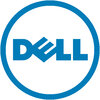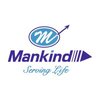Filter interviews by
Al-Ewan Medical Company RO Plant Operator Interview Questions, Process, and Tips
Al-Ewan Medical Company RO Plant Operator Interview Experiences
1 interview found
(5 Questions)
- Q1. RO REVERSE OSMOSIS. plant
- Q2. What is R.O ?
- Ans.
R.O stands for Reverse Osmosis, a water purification process that uses a partially permeable membrane to remove ions, molecules, and larger particles from drinking water.
Reverse Osmosis is a water treatment process that uses pressure to force water molecules through a semipermeable membrane.
It removes impurities such as salts, minerals, and other contaminants from water.
R.O systems are commonly used in households, indu...
- Q3. What is P.P.M (Parts Per Million)
- Ans.
P.P.M stands for Parts Per Million, a unit of measurement used to express very low concentrations of substances in water or air.
P.P.M is used to measure the concentration of a substance in a solution or mixture.
It represents the ratio of the mass of the solute to the total mass of the solution, multiplied by one million.
For example, if a solution contains 1 part of solute for every 1 million parts of solution, it is ex
- Q4. How many Chemical use in R.O. ?
- Ans.
Chemicals used in R.O. plants vary depending on the specific system and water quality, but common ones include antiscalants, disinfectants, and pH adjusters.
Antiscalants are used to prevent scaling and fouling of the membranes.
Disinfectants like chlorine are used to kill bacteria and other harmful microorganisms.
pH adjusters like sulfuric acid or caustic soda are used to maintain the optimal pH level for the membranes
- Q5. What is Work of send filter
- Ans.
Sand filter is used to remove suspended solids from water by trapping them in the sand bed.
Sand filter works by passing water through a bed of sand to trap suspended solids.
It is commonly used in water treatment plants to remove particles like dirt, debris, and algae.
Regular maintenance is required to clean and backwash the sand filter to ensure proper filtration.
Sand filters are effective in removing particles down to
Interview Preparation Tips
potable water
Maintain the treatment plant systems
Maintain and operate the filtering and chemical treatment processe
Inspect, service and repair components of the water treatment plant including
water intakes, pipes, water storage vessels, chemical treatment equipment
controls, circulation pumps, boilers, heat exchangers and valves
Ensure an adequate supply of water for human consumption and fire fighting
activities
Prepare work orders for servicing and repairs the treatment plant systems on a
daily basis to ensure effective operations
Conduct regular inspections of the physical plant
Establish a preventative maintenance program
Maintain the general administration of the water system in order to ensure
effective operations
Establish preventative maintenance schedules
Administer water distribution contracts
Keep a daily log Book
Prepare activity and work order reports
Recommend the purchase of goods and equipment
Maintain inventories
Ensure records are maintained
Top trending discussions






Interview questions from similar companies

I applied via Recruitment Consultant and was interviewed before Jun 2020. There were 3 interview rounds.
Interview Questionnaire
1 Question
- Q1. 6 's' part
Interview Preparation Tips

I applied via Recruitment Consultant and was interviewed before Jun 2020. There were 4 interview rounds.
Interview Questionnaire
2 Questions
- Q1. Why used 7qc tools in quality.
- Ans.
7qc tools are used in quality to identify and solve problems in a systematic way.
Helps in identifying root cause of problems
Provides a structured approach to problem-solving
Improves quality and reduces defects
Increases efficiency and productivity
Examples include Pareto chart, fishbone diagram, control chart
- Q2. Describe cause & defect digram with example.
- Ans.
Cause and effect diagram is a tool used to identify and analyze the potential causes of a problem.
Also known as fishbone diagram or Ishikawa diagram
Used in quality control and process improvement
Identifies root causes of a problem by breaking it down into smaller categories
Example: A company uses a cause and effect diagram to identify the reasons for low sales. Categories include product, price, promotion, place, peopl...


(2 Questions)
- Q1. Many types questions
- Q2. What is transformer
- Ans.
A transformer is an electrical device that transfers electrical energy between two or more circuits through electromagnetic induction.
Transformers are used to increase or decrease the voltage in electrical circuits.
They consist of two coils of wire, known as the primary and secondary coils, wrapped around a core made of iron or other magnetic materials.
Examples of transformers include power transformers used in electri...
Interview Preparation Tips

I applied via Company Website and was interviewed in Feb 2024. There were 2 interview rounds.
Aptitude, logic, reasoning and Embedded c , And Digital electronics questions.
(4 Questions)
- Q1. Explain communication Protocol?
- Ans.
Communication Protocol is a set of rules that allows two or more entities to communicate with each other.
Communication protocols define the format, timing, sequencing, and error checking of data transmission.
Examples include TCP/IP, HTTP, FTP, and SMTP.
Protocols can be implemented in hardware, software, or a combination of both.
They ensure that data is transmitted accurately and efficiently between devices.
- Q2. Write a Simple code of C language ?
- Ans.
A simple code in C language can be a program to print 'Hello, World!' on the screen.
Use the 'printf' function to print the text on the screen.
Include the 'stdio.h' header file for input/output operations.
Write the code within the 'main' function for execution.
- Q3. Write pointer code ?
- Ans.
Pointer code is used in programming to store memory addresses of variables.
Declare a pointer variable: int *ptr;
Assign address of a variable to a pointer: ptr = &variable;
Access value at the address stored in a pointer: *ptr = 10;
- Q4. What is the difference between structure and array?
- Ans.
Structure is a user-defined data type that can hold different types of data, while an array is a collection of similar data types stored in contiguous memory locations.
Structure can hold different types of data, while array can only hold one type of data.
In a structure, you can define multiple variables of different data types, while in an array, all elements must be of the same data type.
Example: struct Person { strin
Interview Preparation Tips
Skills evaluated in this interview

I applied via Walk-in and was interviewed in Nov 2024. There was 1 interview round.
(2 Questions)
- Q1. What is TPM pillar
- Ans.
TPM pillar stands for Total Productive Maintenance, a methodology focused on maximizing the effectiveness of equipment and minimizing downtime.
TPM pillar involves proactive and preventive maintenance strategies to ensure equipment reliability and availability.
It includes activities such as autonomous maintenance, planned maintenance, and focused improvement.
TPM pillar aims to involve all employees in equipment maintena...
- Q2. What is waste in manufacturing
- Ans.
Waste in manufacturing refers to any material or process that does not add value to the final product.
Waste can include defects in products, overproduction, waiting time, unnecessary transportation, excess inventory, unnecessary motion, and overprocessing.
Examples of waste in manufacturing include defects in products that require rework, excess inventory that ties up capital, and unnecessary transportation of materials
Interview Preparation Tips

I applied via Job Fair and was interviewed before May 2023. There were 2 interview rounds.
That is so very simple work i like you
(2 Questions)
- Q1. It is so very nice job
- Q2. It is so beautiful job in vivo company
Interview Preparation Tips

I appeared for an interview in Dec 2024.
(1 Question)
- Q1. Communication and overall work and educational discussion cum salary discussion

I applied via Company Website and was interviewed in Oct 2022. There were 2 interview rounds.

(2 Questions)
- Q1. Technical questions College name Self intro
- Q2. My experience related questions. & 2.5 year working in sap QM , SAP MM
Interview Preparation Tips
My experience
ERP
Sap QM SAP MM.

(2 Questions)
- Q1. Define sheet metal project
- Ans.
A sheet metal project involves designing and fabricating metal components using thin sheets of metal.
Involves cutting, bending, and shaping metal sheets to create desired components
Commonly used in industries such as automotive, aerospace, and construction
Requires knowledge of metal properties, fabrication techniques, and design principles
- Q2. Defects in sheet metals and plastic
- Ans.
Defects in sheet metals and plastic can impact the quality and functionality of products.
Common defects in sheet metals include cracks, dents, and scratches.
Common defects in plastic include warping, sink marks, and flow lines.
Defects can be caused by improper manufacturing processes, material impurities, or design flaws.
Quality control measures such as inspections and testing can help identify and prevent defects.
Exam...
(2 Questions)
- Q1. 5s?,kaizen,6sigma
- Q2. Electromechanical component design
Al-Ewan Medical Company Interview FAQs
Tell us how to improve this page.
Interview Questions for Popular Designations
- Plant Operator Interview Questions
- Batching Plant Operator Interview Questions
- Concrete Batching Plant Operator Interview Questions
- Packing Operator Interview Questions
- Operator Interview Questions
- RO and DM Plant Operator Interview Questions
- ETP Operator Interview Questions
- Water Treatment Plant Operator Interview Questions
- Show more
Al-Ewan Medical Company RO Plant Operator Interview Process
based on 1 interview
Interview experience
Interview Questions from Similar Companies

UST

Vivo

Dell

Hyundai Motor India Limited
- Home >
- Interviews >
- Al-Ewan Medical Company Interview Questions >
- Al-Ewan Medical Company RO Plant Operator Interview Questions








